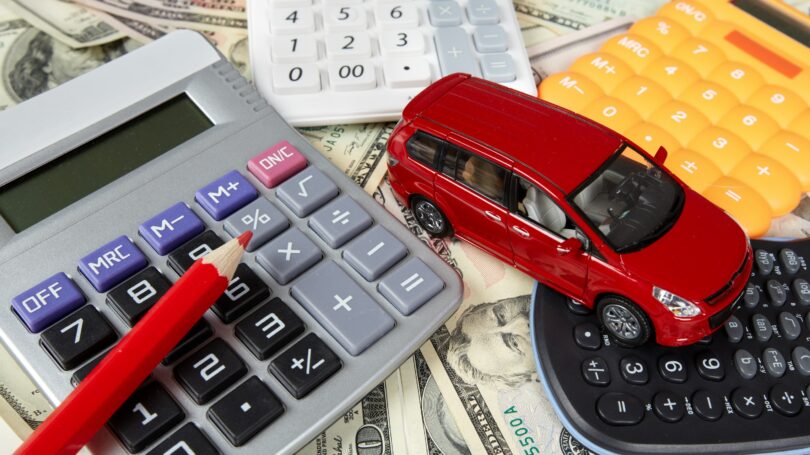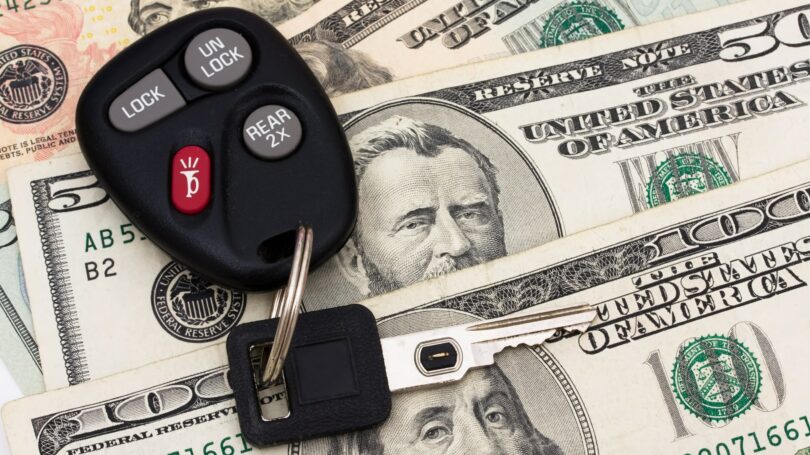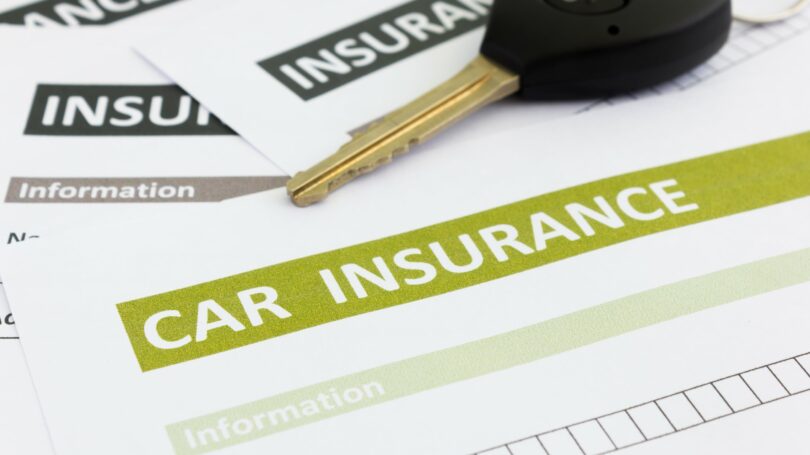If your current vehicle is on its last leg, or if you’re simply ready for something different, it might be time to bite the bullet and purchase a new car. That said, buying a new car isn’t some small, insignificant purchase.
There are many costs that inflate a car’s expense beyond the simple ticket price. You want to make sure the car you buy is one you can actually afford, so before you sign and drive, make sure you fully understand the costs of buying a car.
Factors Affecting Car Affordability
1. Monthly Car Payment
If you’re like the vast majority of car buyers, you’ll probably secure a loan before heading to the dealership. But just because you’re planning to pay for a car in installments, it doesn’t necessarily mean you can afford the purchase. While paying $400 a month sounds a lot better than paying $20,000 up front, you must remember that’s $400 every month for the next 36, 48, or 60 months – if not longer.
Look closely at your budget to make sure you can afford a car payment. Determine how much disposable income you have after paying all of your living expenses, such as mortgage or rent, food, insurance, entertainment, gas, travel, utilities, and debt payments. It helps to monitor your spending for several months to see where your money goes, and to determine whether there’s wiggle room in the budget.
As a rule, your monthly transportation costs – which includes car payments, auto insurance, and gas – should not exceed 20% of your monthly gross income. To illustrate, if you earn $2,000 a month, your total car expenses should be no more than $400 a month. A reasonable monthly breakdown might include $200 for your car payment, $100 for gasoline, and $100 for auto insurance.

2. Interest
The price of the car isn’t the only thing that affects the total cost of the vehicle. Unless you qualify for 0% financing – which typically requires a minimum credit score in the high 700s – you’re going to pay interest on your car loan. Interest may seem like a small piece of the puzzle, but your rate affects your monthly payments, which can impact the type of car you can afford.
For example, after taking a look at your income and debt, the bank may decide you can spend $370 a month on your car payment. Based on a 60-month term with an interest rate of 4.25%, you can purchase a car with a price tag of $21,000 – not a bad amount. But if you have credit problems and end up with an interest rate of 8%, your purchasing power is affected. Since the maximum amount you can spend on your monthly car payment is $370, the higher interest rate reduces your purchasing power to $18,000.
Don’t get caught off guard by a bad credit score. Order a free copy of your credit report before applying for vehicle loans. This way, you can dispute errors that might lower your score, such as late payments reported erroneously by creditors. Also, if you catch a bad score early, you can delay your purchase and take steps to improve your credit score.

3. Negative Equity From a Previous Vehicle
If you’re financing a car that you want to trade in for a new purchase, you might end up with negative equity. Here’s how negative equity works: When you go to trade in your car, the dealership appraises it and offers you a specified dollar amount as its trade-in value. Unfortunately, this amount might be less than what you owe on the car. This doesn’t mean you can’t trade in the car and purchase a new one, but it does mean that the difference between what you owe on the car and its trade-in value impacts how much you pay for your new car.
For example, if you owe $8,000 on a car you’re trading in, but the dealership offers you $5,000, that’s a difference of $3,000. The dealership then tacks this difference onto the price of your new car. This increases the cost of your new car, as well as your monthly payments. Depending on how much your monthly payment ends up increasing, negative equity can put a new car out of reach.
To avoid negative equity, you’re better off selling your current car as a private party, as the private party value of a car is typically more than its trade-in value. You can sell the car yourself, pay off your car loan, then shop for a new vehicle.
If you decide to go ahead and trade in your car, be sure to give the dealership a down payment that compensates for any negative equity. This prevents you from financing negative equity with your new loan.

4. Auto Insurance Premiums
There’s no such thing as one-price auto insurance. The truth is, what you pay for coverage is based on many factors, including your age, driving record, the make and age of your vehicle, and your coverage type. If you’re currently driving an older car, you’re probably paying a low insurance premium – a rate you’re likely to kiss goodbye when purchasing a newer car.
Back in 2010, I upgraded my 1998 Toyota Camry to a 2010 Toyota Camry. As a result, my monthly auto insurance premium jumped by $65 a month. I expected to pay more, but I didn’t anticipate the size of the price hike.
To avoid getting hit with an unexpected insurance premium, call your insurance company to request a free quote before making a purchase. Insurance companies can provide a fairly accurate estimate of your new premium based on the make and model of the car you’re considering, and you may even want to ask if there are certain makes and models with lower rates. Finally, call around and compare prices – there’s no reason you have to stay with your current insurance provider.

How to Lower Your Transportation Costs
Many personal finance experts recommend following the 20% rule when deciding how much to spend on a car. This rule suggests that you should spend no more than 20% of your gross monthly income on a car, including the cost of the loan, gas, and auto insurance.
Keeping your transportation costs within 20% of your gross income can seem difficult, but it’s easier than you think. For example, if you consistently reduce how much you spend on gasoline, this frees up cash that can go toward your car payment. Other budget adjustments can likewise lower costs in one or more areas, directly impacting how much car you can afford.
1. Monthly Payments
Your monthly car payment is likely to be your greatest automotive expense. But even if you’re prepared to put several hundred dollars toward your monthly loan, realize that there are ways to save.
- Improve Your Credit Score. Before you shop for a car and apply for a loan, check your credit score and take a look at your free annual credit report. Order your report from Annual Credit Report and request your score from myFICO. The higher your score, the better your loan rate you’ll receive. If you know you have 6 to 12 months before you take out a loan, do whatever you can to increase your score. Pay your bills on time and check your report for signs of identity theft or errors. Report any mistakes or suspicious activity to the credit bureaus. You can file a dispute directly through Annual Credit Report, or complain directly to creditors.
- Adjust Your Auto Loan Term. The length of your loan is referred to as its term. A shorter term reduces how much you pay in interest over the course of the loan while enabling you to pay the loan off faster. However, a shorter term increases the amount of your monthly payment. If you’re most concerned about keeping your monthly payment low, consider a longer term, such as 60 months. Just be sure to pay attention to the interest rate and the total vehicle cost before you buy – you don’t want to end up overspending in the long run just to keep your monthly payments low now.
- Save Money for a Down Payment. Banks typically do not require a down payment; regardless, a down payment can help you lower your monthly payment. Down payments reduce how much you need to finance, and, in some cases, can increase buying power. There’s no set rule regarding how much to put down, but you should shoot for about 10% to 20% of the purchase price.
2. Auto Insurance
Auto insurance rates vary greatly between providers and are dependent on many factors, including age, sex, car make and model, and coverage type. Don’t blindly sign up for a new policy with your current insurance provider. Always shop around for the best insurance rates when buying a new car.
- Shop Around and Compare Rates. Don’t assume you have to wait for your auto insurance policy to be up for renewal before you shop around to get quotes from other insurance companies – you can usually switch companies at any time without penalty. Rates vary widely by carrier, and by shopping around, you could find a better deal. This is especially true if you bundle multiple policies with a single company. Also, it’s helpful to request auto insurance quotes based on the vehicle you’d like to buy. This way you’ll know in advance how much you have to pay each month, and can work it into your budget accordingly.
- Compare Auto Insurance Rates for Different Vehicles. Since some cars cost more than others to insure, research the costs for all the models you’re considering. If possible, purchase a vehicle that has a low insurance rate for your area.
- Take a Driver Improvement Course. Traffic violations can drive up your insurance rate, but many car insurance companies offer discounts to customers who take a DMV-approved driver improvement course. It’s possible to complete an eight-hour class in a single day, and depending on your state, you may be allowed to take an online course. If you take the course online, you’ll need to take a computerized test at a state-approved testing center to get credit for the course.
- Opt for a Higher Deductible. If you have a healthy emergency fund built up, it might be worthwhile to opt for a higher auto insurance deductible, which could reduce your monthly premium by as much as 40%. Just make sure you have enough in your savings account to cover the cost of the deductible in the event of an accident.
- Ask About Low-Mileage Discounts. If you work from home or don’t drive your car on a regular basis, you may meet the qualifications for a low-mileage discount. The requirements vary by insurance provider, but you could qualify if you drive less than 8,000 to 10,000 miles a year. From an insurance provider’s standpoint, the less time you spend in the car, the lower your risk of an accident.
3. Gasoline
Do you remember when the price of gasoline was only $1 per gallon? Those days are long gone, which means saving money on gas for your car plays a big role in determining which kind of vehicle you can afford.
- Pick a Fuel-Efficient Vehicle. If you’re set on buying a Lincoln Navigator or another large SUV, you might want to reconsider. These vehicles average between 14 and 20 miles per gallon, forcing you to spend a good portion of your 20% allotment on fuel. Be practical and consider hybrid cars or fuel-efficient cars that get between 25 and 40 miles per gallon. There are many models to choose from, such as the Honda Accord and Civic, the Toyota Camry and Corolla, the Ford Escape and Fusion, and the Nissan Altima.
- Remove Excess Weight From the Car. You might think of your trunk as extra storage space, but you lose a mile per gallon for every 100 pounds you add to your car. To improve your car’s gas mileage and drive more efficiently, remove clutter from your trunk and only store the essentials, such as a spare tire, jumper cables, and a first-aid kit.
- Use GasBuddy. Download the GasBuddy app to your smartphone so you can track and compare gas prices at different pumps in your area.
- Maintain Your Car. Yes, you’re busy, but that doesn’t mean you should skip your car’s regular maintenance. With proper maintenance, you can improve gas mileage and reduce expenses. For example, properly inflated tires improve gas mileage by up to 3.3%, and keeping the air filters in your car clean can improve gas mileage by up to 7%.
Final Word
There’s nothing like a new set of wheels, but don’t let emotions cloud your judgment. Take a long, hard look at your finances to decide whether now’s the right time to buy. Even if your current car is starting to need repairs, they’re probably less expensive than committing to five years of monthly car payments. Give yourself time to make a decision and thoroughly research your purchase.
What other costs go into buying a new car?
